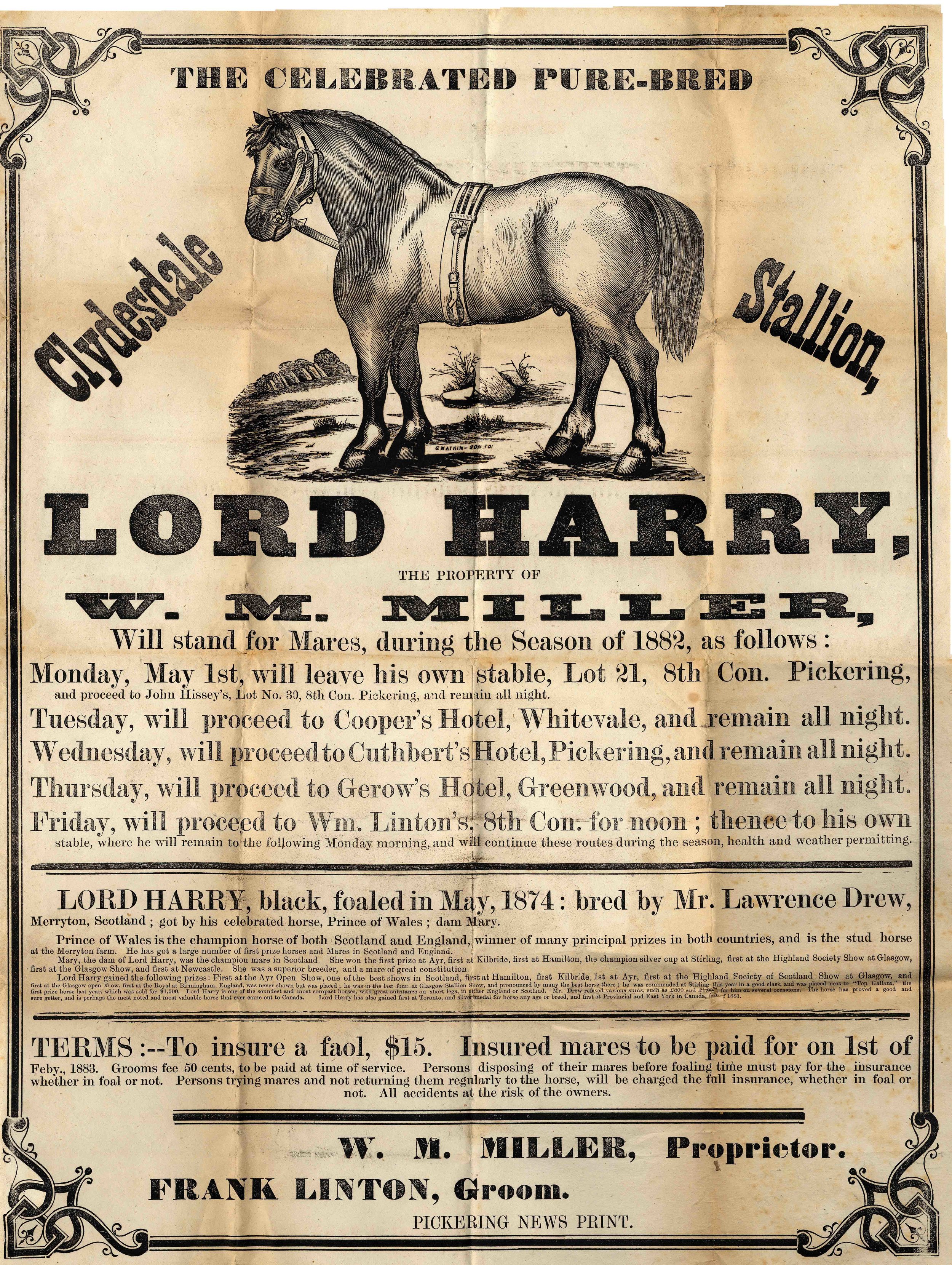Tinder Before Its Time?
Stud books and the evolution of the Clydesdale horse breed
While apps like Tinder may be responsible for many a modern-day human hookup, breeders of Clydesdale horses have been relying on a more analog brand of matchmaking for centuries.
The Clydesdale breed’s story goes all the way back to 1750, when local horses in Lanarkshire, Scotland were strategically bred with Flemish stallions. Back then, industrious farmers were looking for more might and speed to meet the demands of agricultural expansion and a burgeoning industrial age. The Clydesdale horse delivered in spades.
By the early 19th century breeders had built more than just a solid workhorse. Stronger and faster than a typical cart horse of the time, Clydesdales were eager to work and slow to tire, but that wasn’t their only appeal. The breed’s elegant movement and stunning beauty enraptured Clydesdale devotees.
Creating this powerhouse was not as easy as a simple screen swipe to the left or right. The making of one of the world’s greatest horses was a direct result of the vital records carefully tracked in the official stud book.
Calling cards
Stud books were used to record the pedigrees of purebred horses and played a critical role in breed improvement. But, despite the Clydesdale’s enormous popularity around the world, breeders toiled without an official stud book until the latter part of the 19th century — almost 50 years after the name “Clydesdale” had come into common use.
Even so, breeders obsessively sought better and better bloodlines and developed a system where prize-winning stallions were toured throughout their district to breed with local mares. Farmers were always on the lookout for a quality stud, and so stallions had their own calling cards. Stud representatives would distribute printed ‘Stud Cards’, which were essentially the horse world’s version of a dating profile. Stud cards offered key facts that set the stallion apart from the herd, including the horse’s pedigree, prizes it had won, the breeding fee and the dates and locations the stud would be standing for that season. The studs would often be transported long distances to service mares — a practice that helped spread Clydesdales throughout Scotland and England and enhanced and diversified bloodlines.
Celebrity breeders and princely pedigrees
The late 19th century was an amazing time to be a Clydesdale breeder. Elite studs garnered huge buzz. Stud representatives, with their remarkable instinct for strong bloodlines, reached celebrity status. Thousands attended auctions and shows, massive sums were paid, and great lengths were taken to obtain the horse of the moment.
Not surprisingly, prices rose and horses that once had no known history suddenly acquired lengthy aristocratic ancestries. That’s when Breeders began to cry out for proper documentation, and the first official Clydesdale stud book was published in the UK in 1878. Shortly after, the Canadian and American Clydesdale associations followed suit, stoking an already frenzied market for impressively pedigreed Clydesdales in North America.
Breeders consulted the book to find the ultimate sires in constant pursuit of Clydesdale perfection. They argued about what mix made the perfect horse, and this quest for improvement meant that ideal breed characteristics evolved over time. The Clydesdale shifted in size and look, moving from a shorter, “draftier” horse, with hairier legs and exaggerated features early in the 19th century, to a more fine featured, taller breed, that now stands at an average of 16 to 17 hands which converts to 64-68 inches tall.
But, through more than 250 years of evolution what has always drawn Clydesdale lovers is their mix of refinement and power. In more recent years, with a declining population and a smaller gene pool, the stud book has also had to evolve.
It’s a match! Clydesdale online dating
Today, DNA profiling and e-records are replacing the traditional stud book and breeders can now find their horse’s ideal match online. Both Canadian and American Clydesdale associations offer virtual family trees, complete with inbreeding, importing and exporting details of all registered Clydesdales.
Once the match is made, stallions can be brought to mares for breeding the old-fashioned way, or semen can be couriered. As artificial insemination technology improves, so do pregnancy rates using this method. These advancements mean that herds around the world that are struggling with a smaller gene pool can benefit from the DNA of an outstanding stallion that lives thousands of kilometres away.
Today, even surrogacy is an option. An embryo transfer from a donor mare to a recipient can extend breeding options for mares that have trouble with pregnancy or foaling. This allows valuable female genes to be passed on to a new generation.
Since its genesis, the business of breeding Clydesdales has transitioned from friendly neighbourhood introductions in the barnyard to global high-tech hookups. Unlike Tinder and other dating apps, there’s much more at stake for today’s breeding technologies than making an ideal match. Breeders throughout North America, Australia and the UK continue to strive to evolve the breed to ensure a healthy future for these gentle giants for centuries to come.

